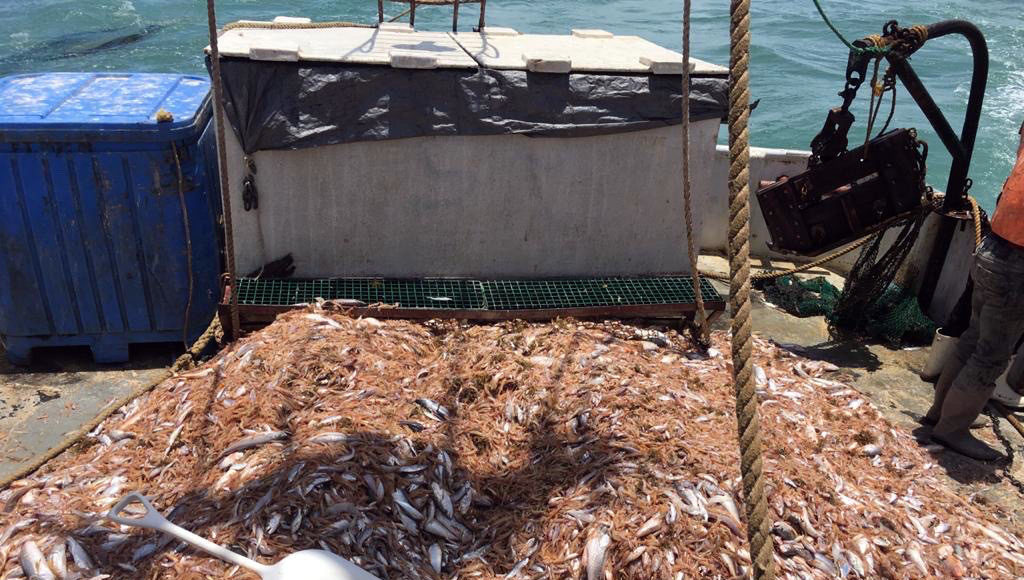Guyana is the world’s largest producer of Atlantic seabob, a commercially important shrimp that is caught from the Atlantic coast of the US all the way down to Brazil. With the emerging oil and gas industry in Guyana, the Food and Agriculture Organization of the United Nations (FAO) said it expects demand for seabob in the country to increase.
Seabob is fished by both industrial trawlers and by artisanal fishers in the new oil producing country. Most of the industrial catch is processed into frozen, peeled shrimp to supply both local and international markets. Artisanal fishers mainly catch seabob (coarse shrimp) and white belly shrimp (fine shrimp) which is then processed in two ways; by drying and by peeling to sell fresh in local markets.
According to the FAO, over 9,000 metric tonnes of seabob was exported in 2018, valued at just over G$7 billion dollars. The current annual harvest is approximately 20,000 tonnes, worth an estimated USD 50 million. This makes seabob Guyana’s most important seafood export.
FAO Representative in Guyana, Gillian Smith, said approximately 87 licensed trawlers and 305 artisanal fyke net vessels do harvesting and operate processing facilities in the South American country. The three largest processing facilities employ some 1600 individuals, 45 percent of whom are women.
“It is anticipated that local demand may rise due to more persons coming to work in the emerging oil and gas production,” Smith said.
A recent stock assessment of Guyana’s seabob population revealed that it is healthy but fully exploited. The continued success of the seabob industry is therefore dependent on strong management of the natural resources stock for sustainability, minimization of waste and detrimental practices, maintaining competitiveness in the global marketplace, and close collaboration and partnership by the key stakeholders. The success of each stakeholder is heavily dependent on sustainable practices by everyone one in the industry.
Smith said the industry has already built a reputation of collaborative management including the recent MSC certification process of commercial fishers. “Building on this, the FISH4ACP was recently launched to enhance the productivity and competitiveness of the Atlantic seabob fisheries in Guyana, thereby strengthening the value chain,” the FAO Representative stated.
She said by working closely with all stakeholders to understand the interlinkages of the entire industry (from input supplies, fishing, processing and packaging, marketing, distribution, export, and sales), it possible to identify and address issues and opportunities that can improve the incomes and livelihoods of all stakeholders.
The FISH4ACP is an initiative of the Organization of African, Caribbean and Pacific States (OACPS), working with selected countries in those regions to improve important fisheries industries. It is implemented by the Food and Agriculture Organization (FAO) of the United Nations, with funding from the European Union (EU) and the German Federal Ministry for Economic Cooperation and Development (BMZ).
Globally, the FISH4ACP is working with twelve fisheries and aquaculture value chains from African, Caribbean, and Pacific to maximize their economic returns and social benefits while minimizing the detrimental effects on natural habitats and marine wildlife.
“In Guyana, our work with the seabob value chain started in November 2020, with a value chain assessment. The results of this step will be of tremendous importance,” Smith said. “We are working closely with the Fisheries Department, the University of Guyana, and other stakeholders to gather information on the main environmental, economic, and social challenges of the seabob fishery. The results of this assessment will lead to more sustainable practices in the fishery.”
FISH4ACP is particularly focusing on maximizing the productivity of small-scale fishers and enhancing the potential of women and youth to contribute to efficiency in the sector. The programme will also assist efforts to reduce bycatch of endangered species such as the electric ray.
Smith said this project will be implemented over five years and success stories will be featured throughout the life of the project.



